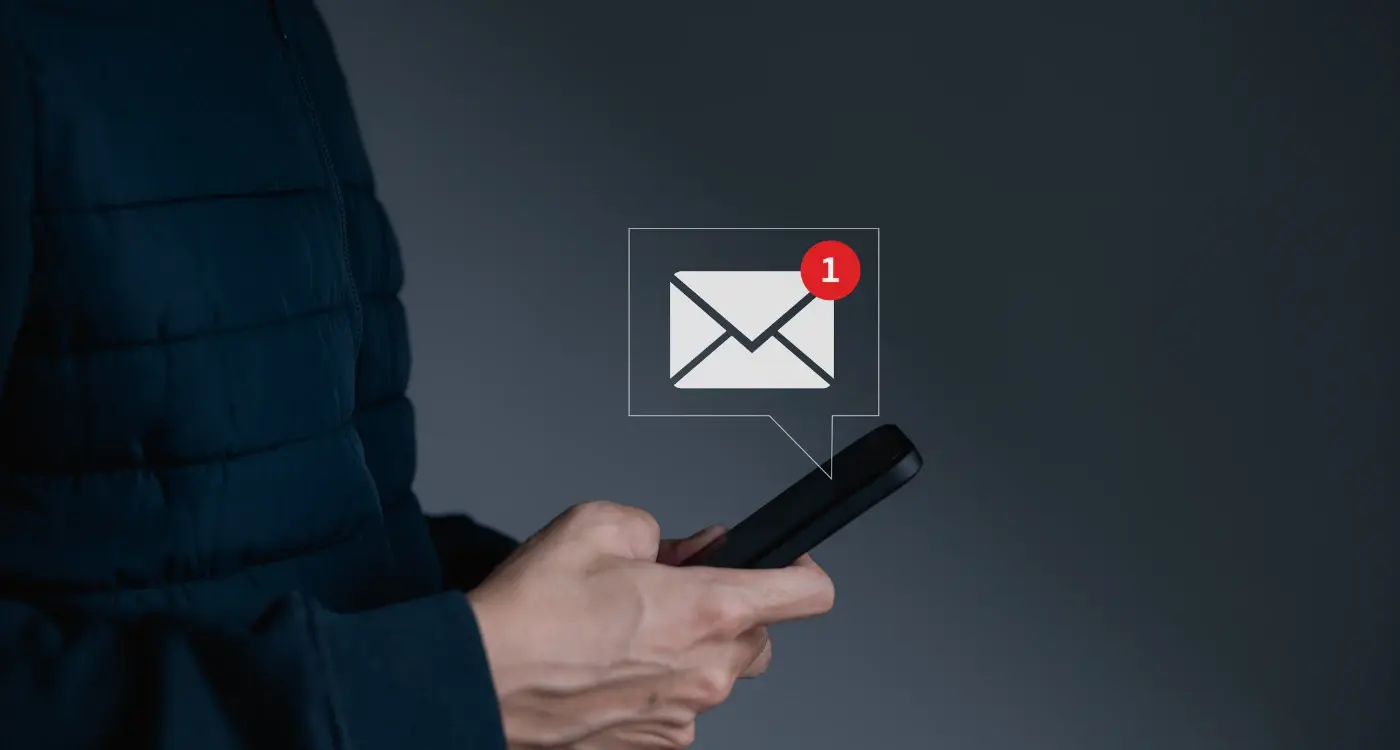Why Do Some Apps Get Higher Retention Rates?
Why do some apps keep users coming back whilst others get deleted after a single use? It's not always the prettiest app that wins—I've seen gorgeous apps fail spectacularly and simple ones become absolute juggernauts. The difference comes down to understanding what makes people stick around.
You might think it's all about having the best features or the slickest design. But here's what I've learned from working with hundreds of clients: app user retention strategies are far more about psychology than technology. People don't just use apps; they form relationships with them. Some apps become part of their daily routine, others feel like work.
The best apps don't just solve problems—they make users feel understood
Throughout this guide, we'll explore the mobile app retention statistics that separate winners from losers, unpack the psychology app engagement principles that drive behaviour, and look at real examples of apps that got it right. Whether you're launching your first app or trying to fix retention problems with an existing one, understanding these patterns can make the difference between success and another forgotten download.
Understanding App Retention Rates
Right, let's get one thing straight—app retention rates are basically how many people keep using your app after they've downloaded it. Simple as that. But here's where it gets interesting: most apps lose about 77% of their users within the first three days. Yep, you read that correctly. Three days!
I've watched countless clients get excited about their download numbers, only to watch their faces drop when they see how many people actually stick around. Downloads are vanity metrics;retention is what pays the bills. When we talk about retention rates, we're usually looking at specific time periods—day 1, day 7, day 30, and sometimes day 90.
The Numbers That Actually Matter
Here's what decent retention rates look like across different timeframes:
- Day 1: 70-80% (anything below 60% is worrying)
- Day 7: 30-40% (this is where most apps start crying)
- Day 30: 15-25% (if you're here, you're doing something right)
- Day 90: 10-15% (these are your proper fans)
The thing about retention is that it varies massively by app category. Gaming apps often see higher initial engagement but steeper drop-offs, whilst productivity apps might start slower but hold users longer. Understanding your category benchmarks helps set realistic expectations—and stops you from panicking when the inevitable drop happens. If you want to dive deeper into what is user retention in mobile apps, there are specific metrics and methodologies that can help you measure success more effectively.
The Psychology Behind Why Users Stay
After building apps for nearly a decade, I've noticed something interesting about user behaviour—it's not just about having brilliant features or stunning design. There's something deeper happening in people's minds when they decide to keep using an app. The psychology app engagement comes down to three basic human needs that we've had since we were cavemen: feeling successful, feeling connected, and feeling in control.
When someone opens your app and completes a task easily, their brain releases a little hit of dopamine. It's the same feeling you get when you tick something off your to-do list. Smart developers design their apps to create these micro-moments of success throughout the user journey. Whether it's finishing a level in a game, sending a message, or simply finding what they're looking for without getting lost in confusing menus.
What Makes People Stick Around
The best mobile app retention statistics show that apps with high retention rates tap into these psychological drivers:
- Progress tracking that shows users how they're improving
- Social features that connect people with friends or communities
- Personalisation that makes users feel the app "gets" them
- Predictable patterns that reduce mental effort
Make your users feel smart, not stupid. Every interaction should leave them feeling more capable than when they started.
The apps that really nail retention understand that people don't just want to use an app—they want to feel good about themselves while using it. When your app becomes part of someone's identity or daily routine, you've moved beyond simple utility into genuine habit formation. Understanding how to best engage your audience involves tapping into these deeper psychological motivations that drive user behavior.
First Impressions Matter Most
You know that feeling when you download a new app and within the first thirty seconds you're already thinking about deleting it? That's the power of first impressions—and they can make or break your retention rates before users even get to see what your app can really do.
I've watched countless apps lose potential long-term users simply because they didn't nail those opening moments. The onboarding process is where most apps either win users over or send them running to the competition. Users make snap judgements about whether your app is worth their time, and once they've decided it isn't, getting them back is nearly impossible.
What Makes Users Stay Past the First Launch
The best apps I've worked on all share these characteristics during those opening moments:
- They load quickly without endless splash screens
- The main purpose is clear within seconds
- Users can accomplish something meaningful straight away
- Sign-up processes are kept minimal or optional
- The interface feels familiar and easy to navigate
Think about it this way—your app is competing against every other app on someone's phone for attention. If users can't figure out what you do or how to do it within their first interaction, they'll simply move on to something that makes more sense to them. Many developers wonder will my customers actually download and use my app, and the answer often lies in these crucial first moments.
Keeping Users Coming Back for More
Right, so you've got someone to download your app and they've had a decent first experience. Job done? Not even close! This is where the real work begins—turning that one-time user into someone who comes back again and again. And trust me, this is where most apps completely fall apart.
The secret sauce isn't rocket science, but it does require thinking like your users do. People come back to apps that either solve a real problem for them or give them something they genuinely enjoy. Sounds obvious, right? Yet so many apps miss this completely and focus on flashy features instead of useful ones.
Give People a Reason to Return
Push notifications are your friend here, but only if you use them properly. Nobody wants spam at 3am about your latest feature update! Instead, send notifications that actually add value—reminders about things they care about, updates that matter to them personally, or content they specifically asked for. Getting notifications right is crucial, and there are important considerations for app developers when sending alerts and notifications to users that can make or break your retention efforts.
The apps that succeed long-term are the ones that become part of people's daily routines, not just occasional downloads they forget about
Fresh content keeps people interested too. Whether that's new articles, updated features, or seasonal changes—give users a reason to check back in. And here's something I've learned over the years: personalisation works wonders. When an app remembers what I like and shows me relevant stuff, I'm much more likely to stick around.
Common Mistakes That Kill Retention
After working with hundreds of apps over the years, I've seen the same retention-killing mistakes happen again and again. It's like watching people step on the same rake! The frustrating part is that most of these problems are completely avoidable if you know what to look for.
The Big Four Retention Killers
Here are the mistakes I see most often when apps lose users faster than they can gain them:
- Making the sign-up process too long or complicated—people will just give up
- Sending push notifications at the wrong times or sending way too many
- Having slow loading times that make people wait around doing nothing
- Not explaining what the app actually does or how to use it properly
The Silent Killer Nobody Talks About
But there's one mistake that's even worse than all of these combined—ignoring your users completely. I can't tell you how many app owners I've met who launch their app and then just... wait. They don't look at the data, they don't ask for feedback, and they don't update anything. Your app isn't a plant that grows on its own; it needs constant attention and care to keep people interested and coming back for more. This becomes even more challenging as time passes, which is why learning how to boost user engagement as your app ages is essential for long-term success.
What the Numbers Tell Us About Success
Let me share some mobile app retention statistics that might surprise you. The average app loses 77% of its users within the first three days—that's not a typo, it really is that brutal out there. By day seven, you're looking at an 85% drop-off rate, and by day thirty? Well, let's just say most apps are left with fewer than 10% of their original users still active.
But here's where it gets interesting. Apps that implement proper app user retention strategies see dramatically different numbers. Those that send personalised push notifications (not spam, mind you) retain 3x more users than those that don't. Apps with seamless onboarding processes keep 50% more users past the first week compared to those with clunky sign-up flows.
The Magic Numbers Worth Remembering
The psychology app engagement data shows us something fascinating: users who complete a meaningful action within their first session are 5x more likely to return. Whether that's finishing a tutorial, making their first purchase, or connecting with a friend doesn't matter—what matters is they achieved something valuable quickly.
Track your Day 1, Day 7, and Day 30 retention rates religiously. If your Day 1 retention is below 70%, your onboarding needs work before you focus on anything else.
The apps that consistently beat these averages all share one thing: they understand that retention isn't about tricks or gimmicks—it's about delivering genuine value from the very first tap.
Learning from Apps That Got It Right
Looking at successful apps over the years, I've noticed they all share some pretty clever tricks that keep people coming back. Instagram nailed the simplicity game from day one—open the app, see photos, double-tap to like. Job done. No confusing menus or hidden features that make you scratch your head.
Spotify understood something brilliant about habit-forming. They don't just play music; they create personalised playlists that make you feel special. Your Discover Weekly feels like it was made just for you (because it was!). That personal touch makes users feel connected to the app rather than just using it.
What These Apps Do Differently
The apps that get retention right focus on solving real problems without making things complicated. WhatsApp became the go-to messaging app because it simply works—messages send quickly, the interface is clean, and it doesn't try to be everything to everyone.
- They solve one main problem really well
- The user interface feels natural and easy
- They give users quick wins and positive feelings
- Regular updates add value without breaking what works
- Push notifications are helpful, not annoying
These apps understand that retention isn't about fancy features—it's about becoming part of someone's daily routine through consistent value and great user experience.
Conclusion
After working with hundreds of apps over the years, I can tell you that app user retention strategies aren't rocket science—but they do require genuine commitment to understanding your users. The mobile app retention statistics we've looked at paint a clear picture: most apps lose the majority of their users within days, but the ones that survive and thrive are those that truly get what their audience wants.
The psychology app engagement principles we've explored show us that people stick around when apps make them feel valued, help them achieve something meaningful, and don't waste their time. It's really that simple. Whether it's through brilliant onboarding that shows value immediately, personalisation that makes users feel special, or just making sure your app actually works when people need it most—the fundamentals haven't changed.
Building an app that people want to keep using isn't about following every trend or copying what worked for someone else. It's about understanding your specific users, solving their real problems, and doing it better than anyone else. The apps that get this right don't just survive in today's competitive market—they build loyal communities that keep coming back for more.
Share this
Subscribe To Our Learning Centre
You May Also Like
These Related Guides

How Do I Use Email Marketing To Reduce App Churn?

How Often Should I Ask Users to Share My App?



